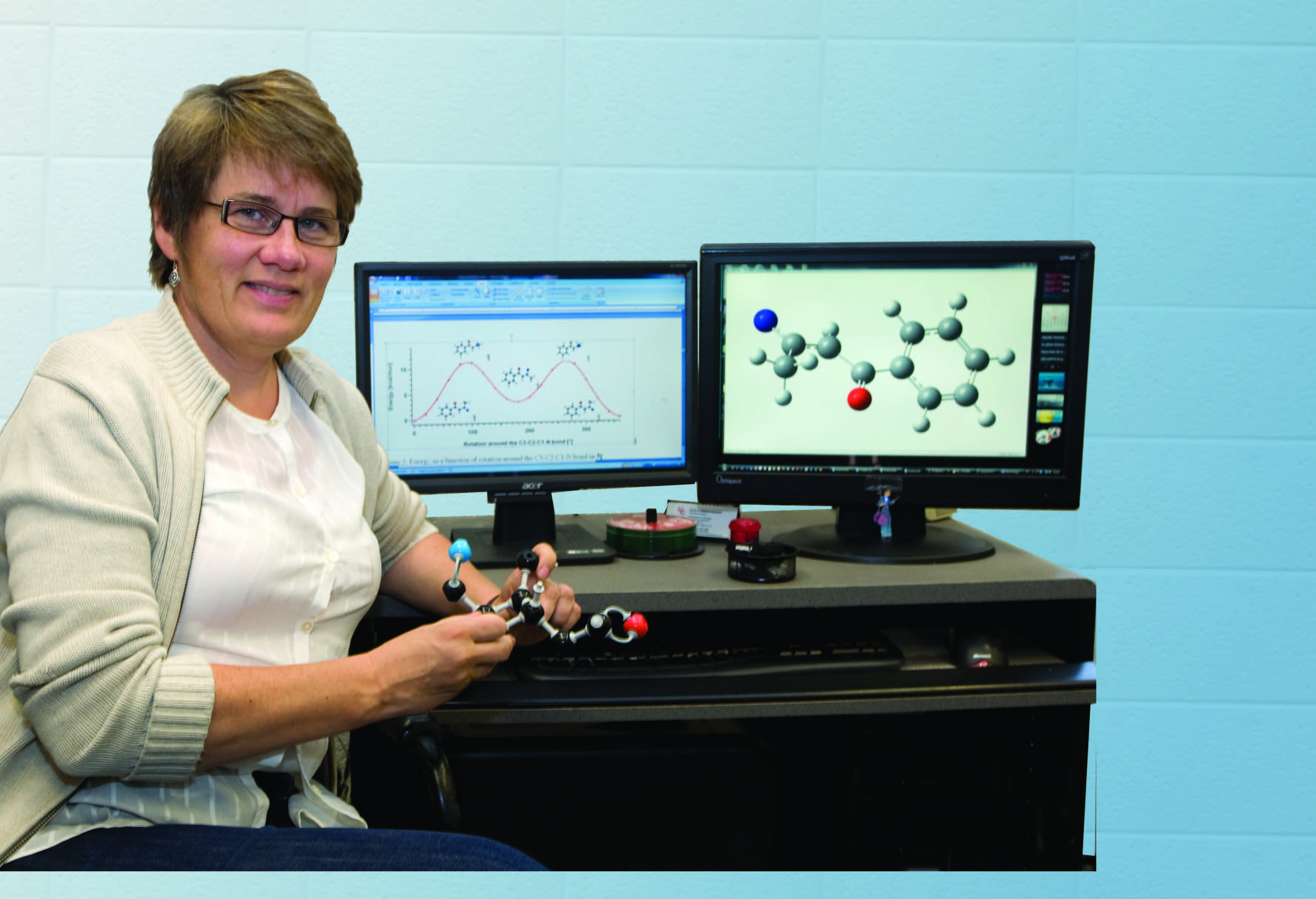Anna Gudmundsdottir’s project at the University of Cincinnati focuses on selectively forming, detecting and investigating the reactivities of vinyl nitrene intermediates in solution and in the solid state.
Fundamental research in chemistry has laid the foundations for the discovery and design of new materials with fascinating magnetic, electrical and optical properties, prompting inventions anywhere from faster computers to lighter long-range planes.
Humans have known of magnetism for 2,500 years, finding simple magnets made from lodestone and observing the colorful aurorae in the skies of the northern and southern hemispheres. For the last thousand years, people have made use of magnetic materials in various ways: a Chinese scientist wrote in the 11th century of using a compass to improve navigation, and the concept of electromagnetism was developed in the 19th century. Today, magnets are found everywhere: credit cards, audio speakers, motors, medical imaging machines and more.
Currently, commercial magnets are based mainly on transition-metals, the 38 entries found in the center of the Periodic Table of Elements, and their corresponding oxides. Recently, however, it has been reported that magnets can be produced using certain organic molecules.
“The interest in organic materials with magnetic properties arises from their potential to be more cost effective and lighter than the more traditional metal magnets,” according to Anna Gudmundsdottir, Ph.D., an associate professor of Chemistry at the University of Cincinnati. “They would be valuable in many commercial applications, such as magnetic shielding and quantum computing. Furthermore, biocompatibility of organic magnets may potentially lead to interesting biological applications, such as magnetic imaging of medical implants.”
This quest for organic magnets has sparked renewed research into intermediates, called nitrenes and carbenes. Most chemical reactions involve more than one elementary step to complete, and a reactive intermediate is an unstable compound that exists only briefly in one of the intermediate steps. It normally is very difficult to isolate and directly observe a reactive intermediate.
Nitrenes are intrinsically more stable than carbenes, and researchers like Gudmundsdottir are intrigued by the possibility of linking together several molecules of intermediates. “Triplet” nitrenes are ideal candidates for researchers to investigate as potential magnets because of their high-spin properties, a condition where unpaired electrons are present and magnetism is possible.
Triplet aryl nitrenes, which have been studied extensively, have been formed by exposing a solution of chemicals called aryl azides to a source of heat or UV light – a chemical process called photolysis. While it has been difficult to stabilize triplet aryl nitrenes, researchers have found some promise in forming them in inert crystal lattices.
Recently, however, a pair of similar compounds – triplet alkyl nitrene and triplet vinyl nitrene – have been produced through photolysis in Gudmundsdottir’s laboratory. These breakthroughs have opened up a new field in nitrene chemistry, where intermediates that have not previously been characterized can now be investigated.
“We have shown that triplet alkyl nitrenes can be formed selectively in solutions and the solid-state,” said Gudmundsdottir. “Furthermore, alkyl nitrenes are highly unreactive. Currently, we are investigating the reactivity of vinyl nitrenes in solution and in the solid-state.”
To aid their laboratory investigations, Gudmundsdottir’s team has accessed the resources of the Ohio Supercomputer Center to conduct molecular modeling of the chemical processes that produce nitrene. To make her calculations, Gudmundsdottir leverages a computational chemistry software program called Gaussian™ to apply “density functional theory” (DFT), a quantum mechanical theory used to investigate the properties and dynamics of molecules.
“Molecular modeling supports characterization of these intermediates and helps to probe their reactivity,” Gudmundsdottir explained. “Our goal is rendering the nitrene unreactive so they can be used as building blocks for organic magnets.”
--
Project lead: Anna Gudmundsdottir, University of Cincinnati
Research title: Reactivity of alkyl and vinyl nitrenes
Funding source: National Science Foundation
